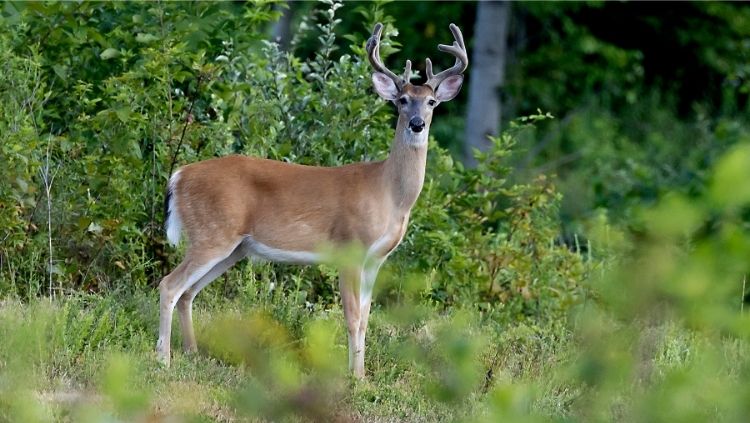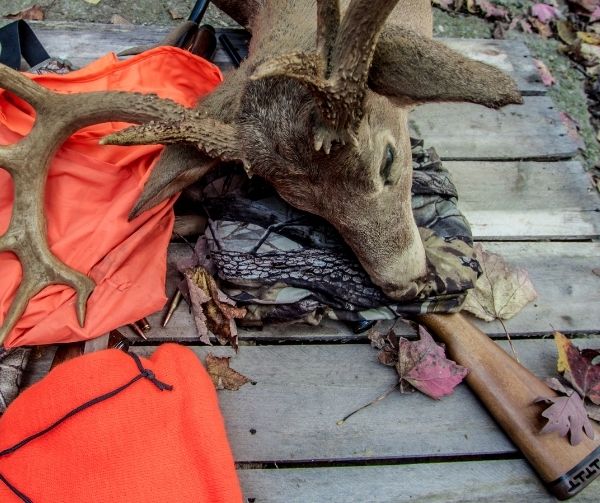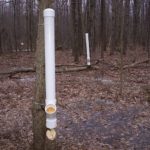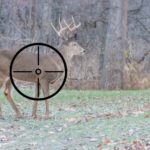One of the oldest rituals in deer hunting is cleaning the animal you just harvested. It’s a gory process, but there’s something satisfying when you’re arm-deep in a warm deer when it’s below freezing.
However, we don’t always knock the deer down with our shot, nor can we always gut the animal where they fell. Darkness is falling, but camp is an hour away. Do you clean the deer now or drag it back to the camp and gut it in the morning?
Spoilage starts immediately, so you should gut a deer as soon as possible. If possible, gut the deer in 2 hours or less. Even in below-freezing temperatures! However, it may not be dangerous to leave a deer ungutted overnight if you need to.
Want to learn why? Read on!
Do You Need to Clean a Deer?
Some hunters will be surprised by this, but you don’t always need to clean your deer!
There’s one circumstance in which I’d feel safe were I to leave a deer uncleaned. That’s when I’m hunting close to a venison processor.
If I can toss the carcass in my car or truck and make it to the nearest deer processing facility in an hour, why go through the mess of cleaning the deer? Have them do it!
The rest of the time, though, it’s vital you gut the deer as soon as possible.
What’s the Danger in Not Gutting a Deer?
Bacteria, mostly.
A variety of microbes start trying to decompose the deer’s remains immediately after it dies in a process called putrefaction.
Once the deer is dead, you’re dealing with what’s effectively a large amount of raw meat, much like you’d get from the butcher. Just covered in skin & fur and filled with bones & guts.
And, just like raw meat, you want to keep it out of the “Danger Zone” that leads to the rapid growth of disease-causing bacteria such as Salmonella. This is between 40 F and 140 F (Source: USDA).
Those microbes double in population every 20 minutes under good conditions. Don’t let them!
Do You Need to Gut a Deer Immediately?
The USDA recommends you leave raw meat out for less than 2 hours. A dead deer is more complex than just “raw meat” but that’s still a good timeline to hit.
Note that various factors can affect bacterial growth rates. Higher temperatures help bacteria grow faster. So does the humidity. If it’s cool and dry, then you have time to spare. If it’s warm and wet, gut the deer now!
But do you really need to gut a deer if the temperature is below freezing? That’s cold enough to safely leave the deer until tomorrow, right?
Wrong.
How Long Can You Wait to Clean a Deer?
Even in below-freezing temperatures, the inside of the deer can stay in the danger zone for a day or longer.
A deer’s body temperature is between 100 F, and 107 F. Deer are also fairly well insulated by fur. This means that their insides stay warm far longer than their outsides, allowing those nasty gut microbes to flourish and spoil the meat.
A large deer shot when the temperature is 25 F may maintain a temperature inside the thigh above 40 F for 24 hours (Source: University of Nebraska – Lincoln)!
This is why gutting the deer quickly is so important, even when the temperature is below freezing.
Once you have the guts out and the rest of the meat open to the air, it will cool quickly so you can take advantage of the cold.
So, how long can you wait to clean a deer?
You shouldn’t wait. You can finish field-dressing the deer later, but you need to gut it as soon as you can.
Which Part of the Deer Goes Bad First?
The guts, which is why they are often discarded.
Just like a human’s, a deer’s intestines are filled with bacteria. These will start to escape the innards once blood flow ceases, heading outward.
Stomach gasses can also escape, causing spoilage.
If you hit the deer with a gunshot, then you just gave those unwanted bacteria access to the delicious venison, kickstarting spoilage.
Also, any openings, such as the ears, mouth, and anus, can allow bacteria inside.
Related: Where to Shoot a Deer: 6 Kill Zone Shot Placements with Graphics
Is it Dangerous to not Gut a Deer Overnight?
While you should clean your deer quickly, that doesn’t always happen. You may have to give up the blood trail due to darkness and try again in the morning.
Is it still safe to field dress that deer and eat the meat?
Thankfully, bacterial growth at this stage affects the quality of the meat more than its safety. (You’re not eating raw venison, right?)
So long as the meat doesn’t have maggots, a green color, or other visible spoilage, and it smells like venison instead of rot, then cooking the meat should be sufficient to render it safe.
Spoiled meat is fairly obvious to the eyes, nose, or both. Don’t discard good meat just because you shot a deer in the evening and couldn’t find it until morning.
In cooler temperatures then the meat will stay safe longer, despite the innards staying warm. You may have to discard the nutritious organs if you don’t clean the deer in time, though.
Conclusion
It’s essential to gut deer as soon as you have the deer’s body in your hands.
After recording the kill and taking an impressive picture, of course!
Gut bacteria and stomach gasses will soon start spoiling the meat. It’s a natural part of decomposition, and, thankfully, it’s a process. This means that, depending on the ambient temperature, a little bit of spoilage may pass unnoticed when you’re tearing into that venison steak.
So, my advice is to gut the deer and get the meat’s temperature down to 40 or below as soon as you can. If you can’t get to the deer immediately, though, avoid being over cautious and don’t waste meat unless it’s obviously spoiled.
What’s more important than gutting a deer immediately, though?
Making sure it’s dead before you approach the body!
A scared, injured deer is capable of injuring an unwary hunter. Confirm your kill before you gut your deer!
Recommended for you:






